by Marta Jecu // Nov. 30, 2011
The explicit and provocative credo of Portuguese architecture office Arquitectos Anonimos, founded in 2006, is an active response to the prevalent role that architects have come to adopt: the project-mastermind. The goal is an architecture that is not the result of a uni-directional, authorial process, i.e. an identity mark of the creator, but a construction that changes its shape and reinvents itself day by day. Arquitectos Anonimos also takes a position against the weight that architectural figures take in present Portuguese culture, and tries to find possibilities for a building that can host and be shaped by plural identities.
Arquitectos Anonimos’s work is a composition of pre-existing fragments, archeologically excavated from the environment and collided into tectonic constructs. The end structure has the quality of the organic finish embodied in monumental natural forms. For instance, a shipping container is transformed into a house by wrapping it in wood and glazing the openings in highly reflective glass so that the surrounding environment is mirrored. Another house is dressed in cork bricks, and uses a surface-dynamizing system of openings, while another dark smokey black construction of phenolic plywood reads as an excrescence stemming from the earth. These structures – NG house (Arquitectos Anónimos, Maria Veloso and Vasco Aragão, St. Tirso, Portugal, 2006), the Cork House, (Arquitectos Anónimos and Paulo Teodósio, Esposende, Portugal, 2007) and the FFAT House (Arquitectos Anónimos and Paulo Teodósio, VilaNova de Gaia, Portugal, 2006), respectively, let spaces appear and be functional, by prolonging and reloading the qualities of the natural environment they are part of. The biodegradable, water-proof, and insulating cork, as well as the disinfectant phenolic surfaces invest these buildings with properties that equate them to the fluctuations and dialogic presence of living organism. Their warm and smooth appearances are low-cost, ecological, and transmit a simultaneous feeling of familiarity and exoticism. They evoke, in both the imagistic and tactile stimuli, still unexplored territories, while also making their qualities become real, proximate and usable.
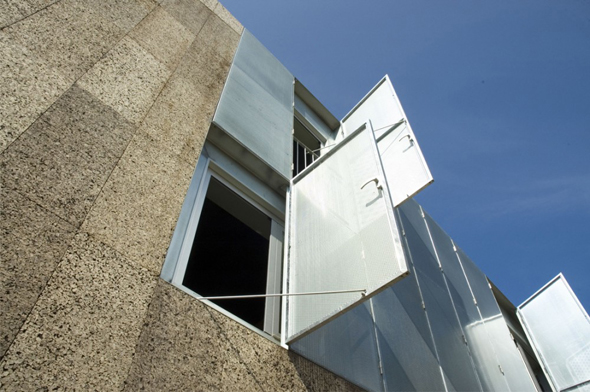
The Cork House, Arquitectos Anónimos and Paulo Teodósio, Esposende, Portugal (2007); image courtesy of Ivo Canelas
With these key issues in mind, I exchanged thoughts with Filipe Afonso of Arquitectos Anónimos about the virtual side of architecture, the possibilities in which architecture can concretely realize an unseen dimension that a certain environment carries, and how the architect makes visible the implicit potential of every constructed presence. The discussion turns around the physical and experiential limits of a building and on Filipe Afonso’s personal criteria of specification between the virtual and the real. Filipe Afonso describes his vision of the “physicalization” of the immaterial and of virtual processes, not only regarding architecture, but also in the general context of lived experience and in connection with another pivotal idea of his work: the autonomy of art and architecture.
Marta Jecu: In the last few decades, virtual architectures have been created with digital means in animations, computer games or in the architectural field as architectural models. How can we think of a virtual architecture, that is not making use of digital techniques? If it does not become transmittable through digital means, how can an architecture that is virtual, be experiential? Could you name some concrete examples which have to do with the virtual side of architecture?
Filipe Afonso: Virtual reality could be more real than many things we normally understand as reality. The physical world is often described by metaphors borrowed from the virtual realm. When Manuel Castells, in his book The Information Age, refers to the idea of “space of flows”, he is suggesting that electronic (numerical, informational) exchange of images, sounds, symbols, and capital are in fact a spatial domain, a spatial form in the organization of societies – as important as real cities, regions or countries. Architecture is not an exception to this domain. If we adopt the idea of Marcos Novak, then an imaginary architecture exists in a virtual world formed by information and communication processes. Or if we consider that architecture exists first as a design process (be it digital or analog) without gravity constraints, without the need to be built in a “real” environment, then we may think about a real virtual experience. An architecture without tedious physical problems, the ‘architecture of cyberspace,’ as labeled by the sci-fiction writer William Gibson. In Neuromancer he traces the environment of a matrix disconnected from the tangible world: it is a hallucinatory space. Here it is not only architecture that is virtual, but also life itself. Maybe virtual reality is more a kind of hyper-reality and real buildings are becoming the result of programming and information-based processes. This way everything is virtual!
Did the de-materialization of architecture bring a stronger sense of time into architecture, a temporality into the building process, and what connection could that have with an awareness of the virtual?
I believe as much in the de-materialization of architecture as in the increasing “physicalization” of the immaterial (or virtual) processes, not only in architecture and design working processes, but also in life in general. Referring to Castells, the virtuality is becoming a real fact involving real aspects of our lives. Sometimes completely virtual ambiances may influence the way we perceive and experience the physical world.
The passing of time is usually visible through built architectures. Investing space with new qualities of temporality is nothing new. Architects are just moving beyond stable limits, exploring uncertainty in which a vast array of virtual scenarios become possible architecture – possible worlds.
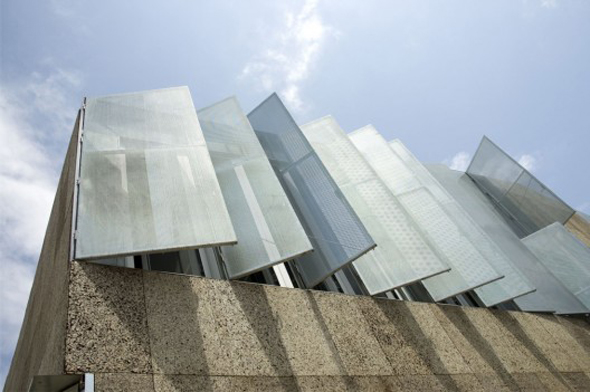
The Cork House, Arquitectos Anónimos and Paulo Teodósio, Esposende, Portugal (2007); image courtesy of Ivo Canelas
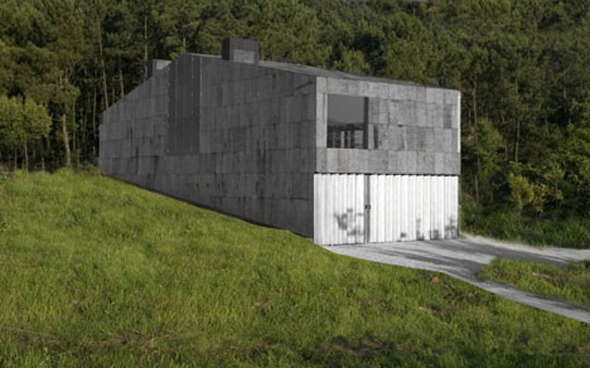
The Cork House, Arquitectos Anónimos and Paulo Teodósio, Esposende, Portugal (2007); image courtesy of Ivo Canelas
In which way is minimalism and conceptualism affecting building processes today, and how do they reflect on your work?
We are trying to look at the processes, ideas, and concepts involved in the formation of an architectural identity in the office, avoiding the so-called clichés and stereotypical images. One of them is minimalism.That´s why we are more stimulated by other disciplines, like physics, mathematics, biology, genetics and in phenomena responsible for shape-formation. Bringing this to our working process, we are trying to question what sort of designs are created through the application of internal logics borrowed from other fields and disciplines.
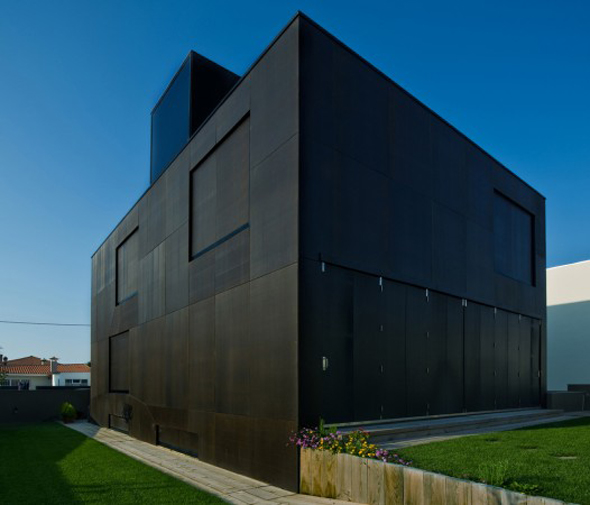
The FFAT House, Arquitectos Anónimos and Paulo Teodósio, VilaNova de Gaia, Portugal (2006); image courtesy of Abel Andrade
Do you observe a tendency to focus not so much on the result, but rather on a potential that situations, environments or constructions carry?
In a time of perceptible technological change, architecture can no longer rely on preconceived methodologies. That’s why it is so important to focus on a critical re-examination of our design processes, with an aim to formulate a more experimental practice. Exploring different pathways, opening up a range of possibilities, instead of using fixed templates, and by accepting the unpredictability of the final result, or as you said, the finished product.
What are some inspiration elements that architectural practice can draw from the fine-arts practice, even if (or especially because) it is connected to transformation and the ephemeral.
Architecture is very much inspired by the recent developments in the arts, especially regarding the question of where form comes from. What interests me in art is the idea of autonomy, and how it may help architecture organize itself and, in its procedural methods, to produce new expressive forms. Artists don’t need a social excuse, program, or demanding client to produce art. In the same way as art, architecture may express itself as an autonomous discipline.
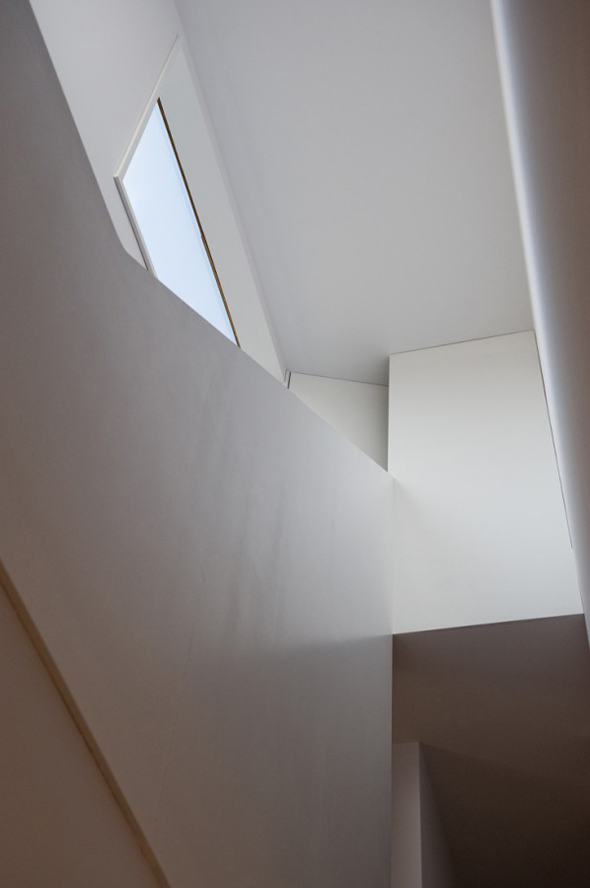
The FFAT House, Arquitectos Anónimos and Paulo Teodósio, VilaNova de Gaia, Portugal (2006); image courtesy of Abel Andrade
Can architecture also be connected to situations? There are artists working with building processes that do not always have a material or visible outcome. Can these be considered architecture, as they are not connected to material manifestations as much as they result from super-impositions of time frames and spatial presences?.
More than being connected to situations, architecture may in fact be conceived without any material outcome. It may “exist” that way. Art exists like that, just think about Sol LeWitt process-based works by writing instructions as a form of art. LeWitt encoded his ideas in a series of rules to define a task of an anonymous draftsperson that physically could create the drawings. Now think about architecture as a manifestation of code, conceived and described through instructions. Architecture may be programmed, manipulated in its framing processes and expressible as a procedure. I think the process of computing an architectural result, using digital tools or not, is already an architecture.
How would you define the virtual and how would you define the imaginary?
We have been discussing the idea of virtual and virtuality. I’m getting furious with the recursive excuse that “virtual is not real”, that it is not a real dimension because it is not a physical experience. Imaginary is much more related with something to come, with future scenarios.
Please talk about some imaginary architectures that you have found interesting or worked on in your own projects? And, in recent years, what have you observed regarding the formulation of imaginary architectures. For instance, in which media are they expressed, what evidence do we have of them, and what functions do they have from a social point of view? Was there a concrete use, and if so, what?
Architectural imagination (imaginary architecture) is often a bore. Imaginary architectural futures shouldn’t fit in the architect’s immediate sphere of control. They should be more wild and auto-organized, endowed with their own will, to refer Deleuze’s New Materialism. In the universe, matter expresses itself. Imaginary architectures shouldn’t be driven: at the most, architects should just play a role of relative control. In a short essay entitled God & Golem, Inc., Norbert Wiener, one of the fathers of cybernetics, suggests the appearance of a scientific imagination. Such a techno/scientific point of view could be transported to architectural production, with the adaptation of scientific methods and procedures to create less imaginary and more concrete architectures. Zbigniew Oksiuta is doing this, producing imaginary (or future real?) scenarios with his “Isopicnic” experiences. Maybe in the future we’ll breed architecture, as we breed dogs and race horses today. Maybe these architectures will literally feed us. Within Arquitectos Anónimos we tried to do something similar, but very rudimentary compared to Oksiuta’s creativity. In a project called ‘Bioter,’our idea was to “genetically” engineer buildings and building structures to contain bacterial enzymes responsible for plastic production. Here, we created an interface – software – to drive the plastic architectonic production in to computable geometries. This architecture would be based on a principle of random growth, processing polymerized materials, breeding physical structures directly from genetic constructs. The project focused on the definition of the digital process to compute random polymerized geometries. In other words, the Bioter programmed generative code to induce the polymer growth paths. Biopolymers would be the main components in creating a sustainable architectonic biotope. I’m not sure about the future of this kind of imagination for architecture, but right now scientists are able to genetically induce corn to produce plastic. I see it as a beginning.
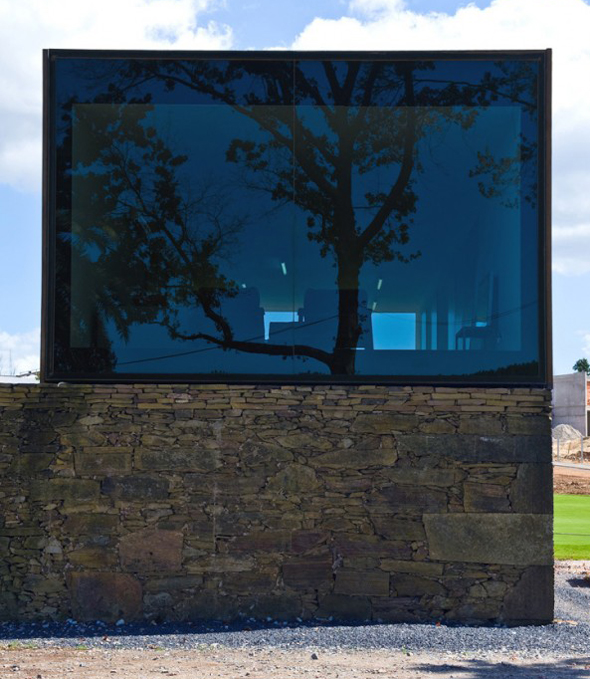
The FFAT House, Arquitectos Anónimos, Maria Veloso and Vasco Aragão, St. Tirso, Portugal (2006); image courtesy of Abel Andrade
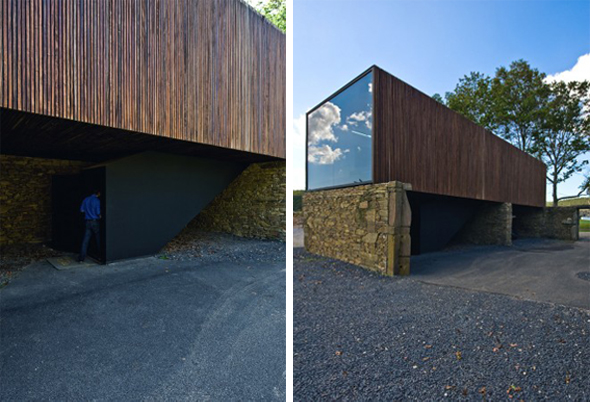
The FFAT House, Arquitectos Anónimos, Maria Veloso and Vasco Aragão, St. Tirso, Portugal (2006); images courtesy of Abel Andrade
Can the situating of the virtual dimension in architecture within a historical time frame be relevant for contemporary practice. For instance, the ancient Greek architectural vocabulary that carried specific spiritual values in the Renaissance, was translated and practically ‘inhabited’ by Renaissance cultural life.
We are much more interested in developing what we call pre-architectural knowledge base. This knowledge comes from the possibility of cultivating renewable “types”. Those types, real or imaginary (this is the way we start projects), are not necessarily linked to predefined formal vocabulary. They may result from “imaginary reconstruction,” from mathematics and physics, from nature’s patterns and phenomena, hidden geometries, processes and procedures, code and numbers. We enjoy unpredictability and the extensive use of the improvisational factor of computational techniques and virtual (rather than digital) tools in our production.
What is the role of emptiness and invisibility in your work?
I’m not sure if I can talk about invisibility in the way we produce architecture. At the end, we will have forms. What I know is that our daily research doesn’t chase after formulas, solutions capable of solving problems, or building a specific aesthetic. Our experiments are pretty much based on trial and error, seeking for variables that permit an establishment of networks between the architect and procedural strategies as inputs to design. Our working procedures do not rigidly determine forms. They try to create a base of inspiration, a common ground that anyone inside the office can appropriate and transmit in turn.
In these terms, maybe we could talk about emptiness related to preconceived ideas. As it happens with the way we start the projects, which are not necessarily linked to predefined formal vocabulary. It is a very important role. Instead of understanding the architectural activity deriving from canonical knowledge, advanced architecture must proceed from emergent results within an experimental design domain. The fast evolution of digital technologies are affecting the architect’s activity, changing the way space is experienced, conceived and materialized. These technologies are a challenge to creativity, to what architects or designers can produce, transforming digital – virtual realms in real built environments.
Additional Info
Arquitectos Anónimos is a Portuguese label founded in 2006. It organizes an opened space stimulating the work as a kind of individual suplantation, liberating its co-authorships from their identity, finding and founding a reinforced new one – daily. Primarly an over reaction against exagerated authorship weigh in Protugues contemporary architecture, it becomes more an antithesis to pseudonym or a fictional name as a a way to shelt the expanded ourselves.
arquitectosanonimos.com
Author Info
Marta Jecu is presently a researcher at CICANT Institute in Lisbon, and has contributed for various magazines, including E-Flux, Kaleidoscope, Journal of Curatorial Studies, Idea Arta+ Societate, and various critical books, such as Visual Studies, Ed. Jim Elkins.


























